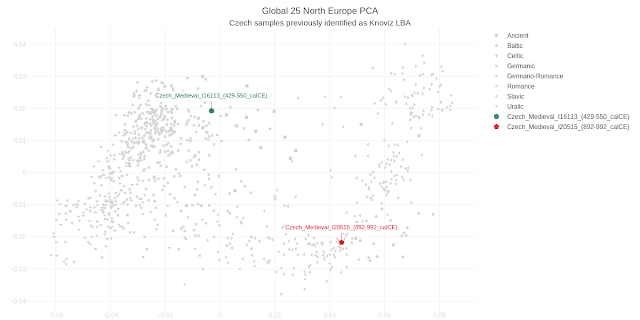Balto-Slavs in Magna Graecia

The two Balto-Slavic samples that I've mentioned earlier on this blog have been finally published in The diverse genetic origins of a Classical period Greek army : Two individuals (I10943/W0396 and I10949/W0403; Sicily_Himera_480BCE_3) fall with modern northeastern European groups and eastern Baltic populations of the first millennium BCE and can be modeled using exclusively BA individuals from Lithuania as a proxy source ( P = 0.129). I10943 Mass grave 1&2 480 BCE battle 764-516 calBCE (2475±20 BP, PSUAMS-4118) Sicily, Himera U5a1a1+152 R-Y35* R1a1a1b1a2b I10949 Mass grave 1&2 480 BCE battle 751-413 calBCE (2450±20 BP, PSUAMS-4866) Sicily, Himera H1m I-L233* I2a1a(xI2a1a2) Y-DNA of one of them is typically Slavic: https://www.yfull.com/tree/R-Y35/ Or rather was, because now it will be surely called "Baltic", "Lusatian" or "Para-Balto-Slavic".



